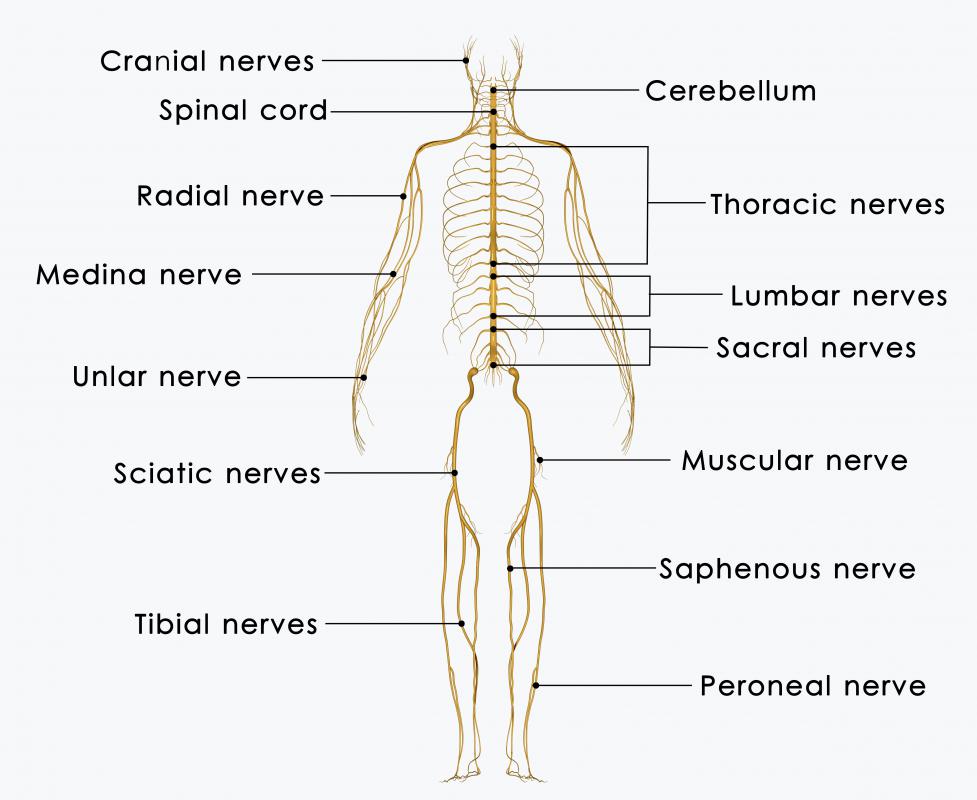At WiseGEEK, we're committed to delivering accurate, trustworthy information. Our expert-authored content is rigorously fact-checked and sourced from credible authorities. Discover how we uphold the highest standards in providing you with reliable knowledge.
What Is a Subcutaneous Nerve?
A subcutaneous nerve is one that is located in the connective tissue just under the first layer of the skin. In addition to being the location of many nerves, the subcutaneous layer of the dermis contains adipose, or fatty cells and blood vessels. Some chronic pain disorders may be treated with the repeated electrical stimulation of a subcutaneous nerve or a surgical intervention to move the nerve to a protected location.
Subcutaneous nerves may become pinched or compressed due to abnormalities of the muscles, bones, or joints located near the nerves. Nerve entrapment causes a tingling sensation that may develop into permanent numbness. This commonly happens to the nerve located in the forearm, called the ulnar nerve. If ulnar nerve entrapment is left untreated, the fingers may stiffen and curl up into what is known as an ulnar claw.

A painful ulnar nerve may be surgically moved to another location within the forearm. Subcutaneous transposition of the ulnar nerve is used to relieve the neuropathy, or nerve pain, from a condition similar to carpel tunnel syndrome (CTS) named cubital tunnel syndrome (CubTS). Once a small incision is made, the ulnar nerve is transposed to an area just under the skin that will not compress the nerve. The more invasive surgical transposition of the ulnar nerve relocates the nerve under a layer of muscle.

Another subcutaneous nerve condition called meralgia paraesthetica develops when the lateral femoral cutaneous nerve becomes compressed or entrapped. Symptoms of femoral nerve entrapment usually begin with a burning or tingling sensation that may travel down the length of the thigh. Treatment involves daily non-steroidal anti-inflammatory (NSAIDs) medications and the application of a topical muscle rub containing capsaicin. If the pain continues, injections of a local anesthetic, such as lidocaine, may be used to numb the femoral nerve. A surgical transaction of the nerve is occasionally necessary to provide permanent pain relief.

Subcutaneous nerve stimulation therapy is used in the treatment of a cardiac condition called chronic angina pectoris. While many angina patients are effectively treated with the spinal cord stimulation (SCS), some are not candidates for this invasive method of treatment. For these patients, a subcutaneously implanted electrical nerve stimulation (SENS) system is placed over the subcutaneous thoracic nerve within the sternum, with leads placed directly above the heart. This less invasive SENS treatment has not been reported to have any serious side effects.
AS FEATURED ON:
AS FEATURED ON:


















Discuss this Article
Post your comments